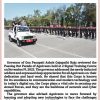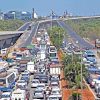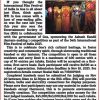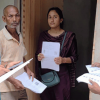Goa is abuzz with excitement as vintage bike and car owners, users, collectors and fans are decking […]
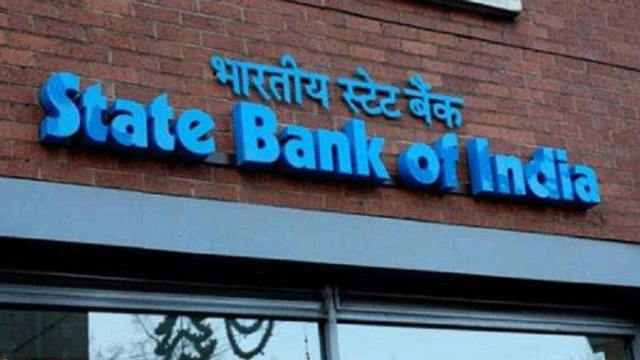
POOR DIGITAL INFRA HITS BANKS, IT!
FINANCE, June 19- June 25, 2021 June 18, 2021SERVER: In the vast majority of cases even banks do not function as the server is down due to poor Internet connectivity, which is much worse in monsoon.
BY Arvind Pinto
Though Finance Minister Nirmala Sitaraman wants all financial transactions to be digitalized, even finding vaccination slots or e-learning are a problem for lack of adequate infrastructure.
THE corona virus has indeed taught the country several lessons while making us realize the deficiencies that we have in our progress to being a developed country. One of the major aspects is the lack of adequate infrastructure. As Indians we would like to believe that we are a developed country, the likes of western nations that we compare ourselves with. But the reality is that India is still a developing country in terms of infrastructure. While we would like to have many of the conveniences of a modern state, we lack the infrastructure to be able to use many of these skills. Take a common example. Many rich Indians have fancy cars, that could easily cruise at speeds over 100 kilometers per hour; but the poor state of our roads and traffic congestions, make these behemoths boring pieces of machinery on wheels on our roads! Let’s look at some of the many disjoints that we face daily.
CONNECTIVITY
WITH the pandemic need to keep social distancing, Indians in urban centers are compelled to communicate or do transactions through the all-pervasive Internet. However, for the Internet to function effectively, there must be reliable connectivity .
One of the biggest hurdles for the common man is the lack of connectivity. Be it in a bank transaction, an income tax or GST filing, application for school, college or university, or even employment in both government or private sector — one requires to go online. The days when we went to collect forms, stood in a line to submit them and obtained a receipt, are a thing of the past. Today much of this is online. While 45% of the Indian population is familiar with the Internet, the problems that are faced by these users are several. One of the biggest issues is connectivity. Professionals who have to communicate through video-conferencing have often found that they face connectivity issues, where either the video or audio keeps shutting off. Further in a conference, you would suddenly find that you are unable to hear the others or their voice keeps breaking off. While we have a large number of users for Internet, the service companies do not have sufficient
connectivity in our cities and this is a big issue. With the lockdown, several have to work from home but face connectivity problems on a regular basis. Low or sporadic connectivity makes for a breakdown of video connection or an erratic voice performance.
ANOTHER issue regarding connectivity is the low bandwidth that we have in the country. Bandwidth is the measurement to indicate the quantity of data that is transmitted over the network. Bandwidth is represented in bits, or megabits that can be transmitted in one second. Much of our connectivity issues relate to the fact that most of our connections have low bandwidth. This hampers both input as also the output of our computers.
Connectivity is also dependent upon the speed by which data is transmitted either through telephone lines or through the air. Presently in India most of our connections are either 3G (generation) or 4G cellular network technology. In comparison, our northern technologically superior neighbor China has already rolled out 5G (fifth generation) network technology. 5G networks that transmit 10 gigabits per second is 100 times faster than 4G networks and would enhance our connectivity. Unfortunately, India is still in the exploratory stage of 5G and it would take several years before it is put into use.
On a positive note, telephone and especially mobile telephony has spread throughout the country. With relatively low competitive rates for services and an expansion of our networks, mobile telephony is available in most parts of the country. This has helped in improved communication, linking our vast hinterland with our urban centers. In this respect we are on par with several developed countries.
BANKING WOES
WITH demonetization and the governmental push to spread the culture of banking in the country, 88% of the rural households have opened bank accounts. Many of the uneducated and rural population opened bank accounts because of the promise of getting a few lakh into their bank accounts courtesy the prime minister of this country. But how many of these accounts are actually used is anyone’s guess, for all we know most may be dead accounts to be abused.
In order to reduce footfall into the premises of our banks, most of them have provided Internet access as also Automatic Teller Machines (ATM’s) to both disperse and collect cash, as also give you information about your bank balance. However, these ATMs rely on connectivity as also logistics for provision of sufficient cash. Many of our ATM’s are either nonfunctional, due to poor connectivity, and most of the time run out of cash. Have you ever faced the situation where you go from one ATM to another, since most of them do not have cash to dispense? If this is the situation in our urban centers, imagine the situation in our rural areas.
CRYPTO CURRENCY, NEW MONEY!
SEVERAL developed countries, even China, have moved into a digital currency system – known as crypto currency. Crypto currency does not have a physical form and is transacted in terms of digital algorithms. This is the currency of the future and many countries have already started using this mode of transaction and payment. However, India is yet to officially sanction this system. Many Indian business men and traders have already started using this medium. Many of them also report crypto currency in their books of accounts. When the world is moving toward this digital currency, India would lose out by being slow to adapt to this new technology!
The present pandemic has made the country realize the need for investment in infrastructure. Unless we build our networks, adopt new technologies and improve our connectivity, we would continue to remain on a lower level of development as compared not only to our neighbors but also the world at large.
